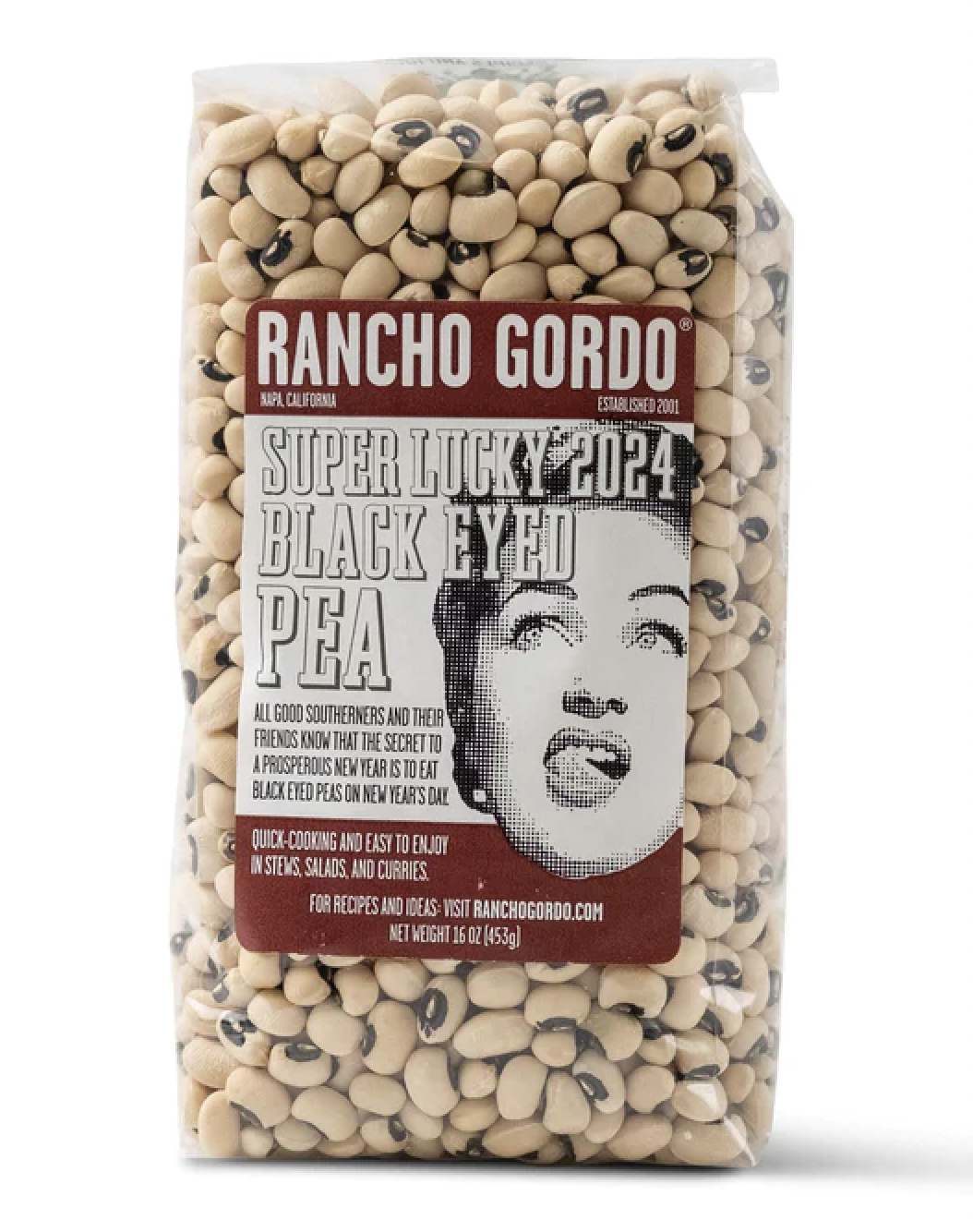By Dev, CN Manager
Good luck in 2024 is on the side of Cambridge Naturals customers, because we're fortuitous enough to stock special heirloom dried black eyed peas from Rancho Gordo! Their Super Lucky 2024 Black Eyed Peas are going to be making their way onto many plates this January 1st--including mine, and hopefully yours, too. I can't wait to integrate them into one of my favorite yearly rituals, one that I've somehow managed to not miss once in over 30 years.
There's an interesting, mysterious history behind the old tradition of eating black eyed peas on New Year's Day in the southern United States. It's one I've also carried with me from my home in the South to my newer home in New England, and I've been blessed with numerous opportunities to share it with my friends in Beantown, as well.
(Fun fact: these little peas aren't peas at all - they're beans from the cowpea family.)
There have always been a diverse array of theories surrounding the genesis of this southern and African American cultural staple. It seems generally agreed upon that enslaved Africans brought black eyed peas, and the tradition of prosperity associated with them, from across the sea during the Transatlantic slave trade. There's also the folk tale that black eyed peas were among the only foods available to survive on during the siege of Vicksburg in the spring of 1863. Another major event also happened in early 1863; the passing of the Emancipation Proclamation, the executive order which freed all Black slaves on January 1st, possibly further cementing the date as an important and auspicious day for the lucky black eyed pea to be consumed.
Regardless of the exact explanation for their continued association with New Year's Day, these little beans symbolize prosperity in the new year when eaten on day 1. They swell when cooked, symbolizing growth, and also are said to represent coins. Growing up in the coastal Carolinas, I was warned by my grandparents and parents that it was of crucial importance to clean my plate and eat every black eyed pea served to me, or I wouldn't have any money in the coming year. Black eyed peas also have some tasty companions with similar symbolism. Leafy greens such as collards are also served alongside them, and are meant to represent greenbacks / paper currency, which also emerged during the Civil War period. Cornbread is another staple meant to represent gold. Pork is traditionally eaten on January 1st as well, because pigs 'root forward', sending you forward into the new year, ready to leave the struggles and habits of the old year behind.
Some traditions vary from place to place and family to family - Hoppin' John, a fragrant combination of rice, black eyed peas, pork, and onion, can be consumed on the 1st as well. In my family, we typically ate a plate of black eyed peas, collard greens, cornbread, and pork on January 1st, and Hoppin' John was made with leftovers on the 2nd. Frugally using leftovers for Hoppin' John also ensures further luck and prosperity in the new year. It can also be used for another day's leftovers as well, which is known as Skippin' Jenny - even luckier! Bean appetite!
Fun additional reading / sources:
- 'Foodways: Volume 7 of the New Encyclopedia of Southern Culture,' ed. John T. Edge
- 'The True Story of Traditional New Year's Lucky Foods' by Sara Bir, from Serious Eats
- Black History Month: Hoppin’ John - Her Mise En Place


